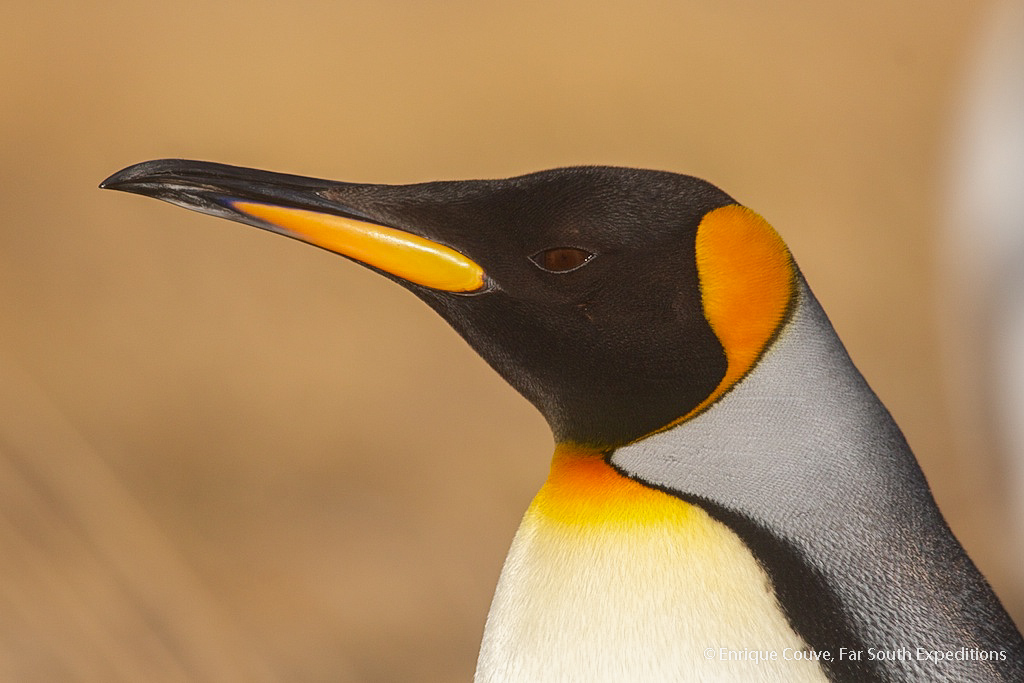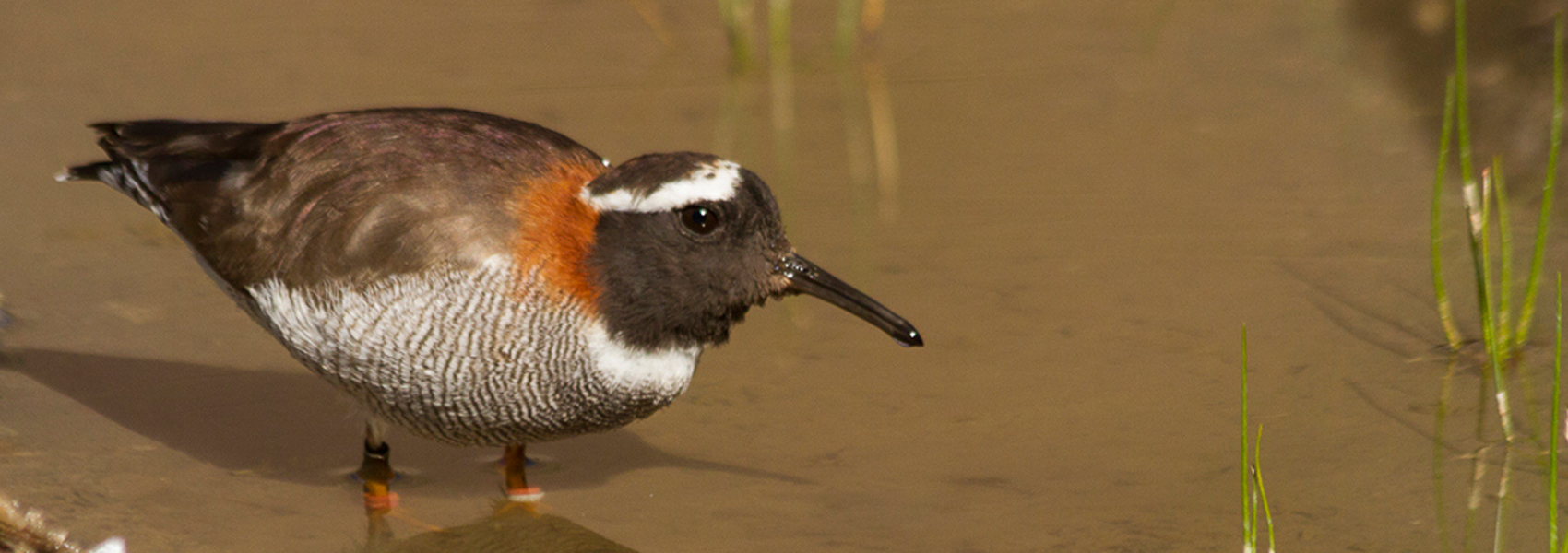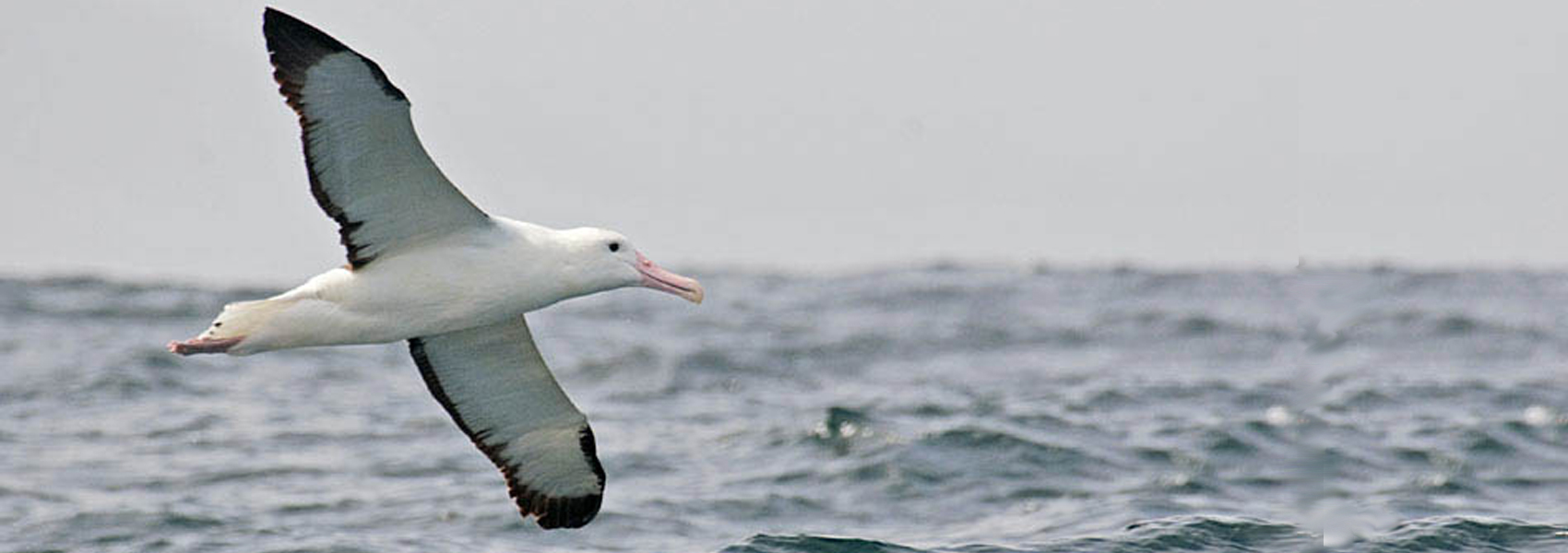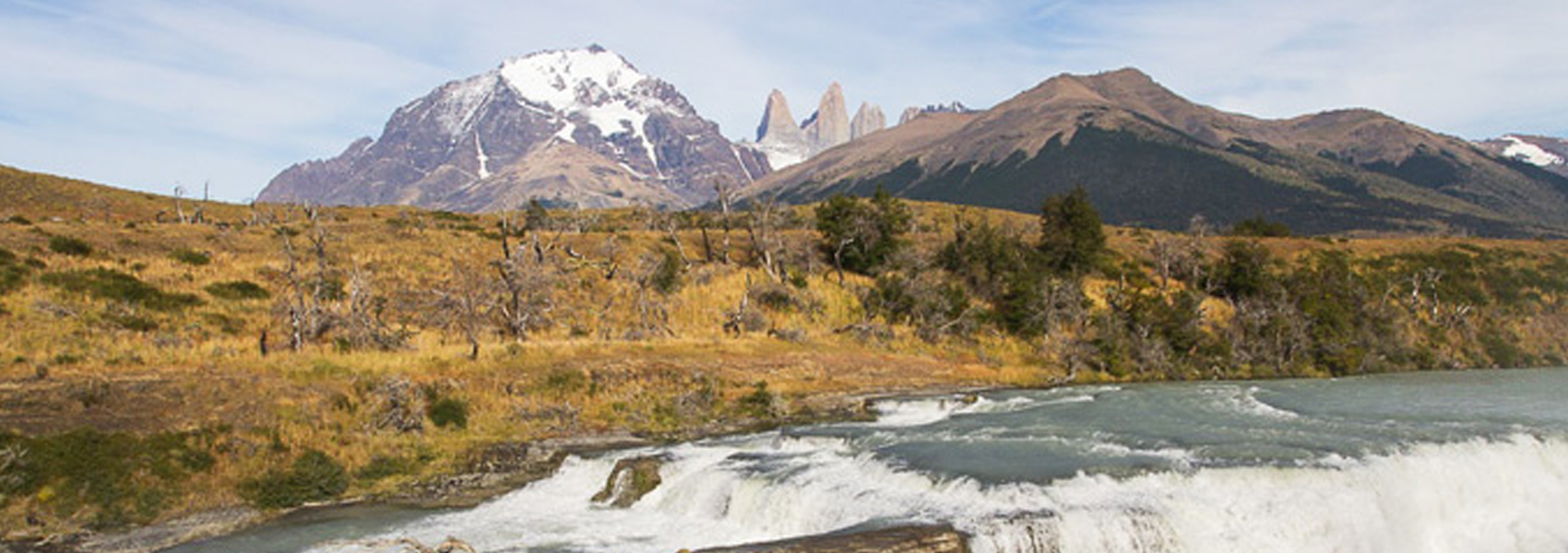
Tour Dates: Tuesday 13th – Tuesday 27th October 2020 (Santiago to Santiago)
Provisional Tour Price: £5,995pp plus flights
Estimated Flight Price: London to Santiago approx. £900 return
Deposit: £600 per person
Conservation Donation from Wise Birding: £300 – £400
Minimum Number: 8 people
Maximum Group Size: 10 people
Target Species
Birds: Andean Condor, Kelp Goose, Ruddy-headed Goose, Dolphin Gull, King Penguin, Magellanic Penguin, numerous Albatross species, Inca Tern, Diademed Plover, Magellanic Plover, Rufous-chested Dotterel, Grey-breasted Seedsnipe, Magellanic Woodpecker, Many-coloured Rush Tyrant and much more!
Mammals: Puma, Southern Grey Fox, Patagonian Hog-nosed Skunk, Peale’s Dolphin, Commerson’s Dolphin & Chilean Dolphin
Tour Summary
We are very excited to be offering this tour again after the 2019 tour. This tour to Chile quite simply has everything as we cover the Central region of Chile and the far south in Patagonia. It has fabulous waders, such as the highly sought after Diademed Plover, Magellanic Plover and Rufous-chested Dotterel, stunning seabirds including numerous Albatrosses, a visit to a King Penguin colony, a good chance of seeing Pumas and other terrestrial and marine mammals and all in a spectacular landscape!
Accommodation: 14 nights in Chile
Good quality lodges and hotels throughout the tour
2 nights Santiago, 2 nights Quintero, 1 night Santiago, 1 night Vilches, 1 night Santiago, 3 nights Torres del Paine, 1 night Punta Arenas, 2 nights Porvenir Island, 1 night Punta Arenas
Inclusive Meals: Full board from Dinner on Day 1 to Breakfast on Day 15
DAY 1: Arrival in Santiago
Most flights from London arrive in the early morning to Santiago and after such a long flight we will transfer to a hotel to leave our luggage. There will then be an optional visit of the city before we can check in to our rooms. The afternoon will be at leisure, ready for an early start to begin the bird tour on day two. Overnight Santiago

DAY 2: ANDES: El Yeso Valley
We will begin our day early exploring the El Yeso Valley in the Andean foothills, where two of the star birds of the trip can be found, the superb Diademed Plover and the Andean Condor. This beautiful wader breeds in the Puna zone of the High Andes at low densities and although its taxonomic status has been debated for many years, it is now generally thought to be most closely related to a group of Australasian Dotterels. Andean Condors certainly need no introduction and we should see a number of birds on this great first day. Other key species we will look for are Crag Earthcreeper, Black-chested Buzzard-Eagle and several other Andean specialties such as Black-winged Ground Dove, Grey-flanked Cinclodes, Black-billed Shrike-Tyrant, Grey-hooded Sierra Finch and Yellow-rumped Siskin. We will visit a lovely mountain spot where we will need to look closely for the cryptically coloured Grey-breasted Seedsnipe and passing flocks of Mountain Parakeets. Overnight Santiago
DAY 3: PACIFIC COAST: Maipo Estuary – Laguna El Peral Nature Reserve – Quintero coastal areas
This morning we will visit the Maipo river mouth and surrounding coastal wetlands, including the exceptional El Peral Nature Reserve, where we will concentrate our efforts to finding Stripe-backed Bittern, the brood-parasitic Black-headed Duck and the stunning Many-coloured Rush Tyrant. We also have a chance to find the scarce and localised Ticking Doradito. During sunset and before heading north to Quintero, we will explore the productive rocky coast as well as the Aconcagua river mouth. Here, we will search for the endemic Seaside Cinclodes as well as endemic seabirds with both Red-legged and Guanay Cormorants, Peruvian Booby, Grey Gull and the truly stunning Inca Tern. Overnight Quintero.
DAY 4: La Campana National Park – Cachagua
Another early start today as we head to La Campana National Park, where we will look for a number of species that are mostly endemic to Chile. Dusky-tailed Canastero, Moustached Turca, Dusky Tapaculo and White-throated Tapaculo will be the key targets. Around the slopes and gullies covered by cacti and Puya (an endemic bromeliad), we will look for Chilean Pigeon, Striped Woodpecker, Giant Hummingbird and Green-backed Firecrown. During the afternoon we will explore the coastal areas north of Quintero, visiting a protected breeding colony of the Humboldt Penguin. Here we also have a chance of seeing the range-restricted Southern Sea Otter.
At the end of the day we will stop at a coastal marsh to see a variety of waterfowl including Red Shoveler, Yellow-billed Pintail, Speckled Teal and Chiloe Wigeon, all three lowland species of coot, Spot-flanked Gallinule and Plumbeous Rail. Overnight Quintero

DAY 5: Pelagic – Lampa Marshes
Today will most definitely be one of the highlights of the tour as we spend a good 6-7 hours at sea where we should experience some of the most exciting pelagic birding boat trips in the world! The Humboldt current draws cold water from the Antarctic and pumps it northwards along the west coast of South America. This process brings nutrients from deep below making this area hugely attractive as a feeding ground for large numbers of amazing seabirds! At this time of year, we should see a great variety of Albatrosses such as Northern Royal, Antipodean, Salvin’s, Buller’s and Black-browed Albatross. Both the rarer Chatham Island and Antipodean Albatrosses are also possible. We should also find Southern and Northern Giant Petrels, Southern Fulmar, White-chinned, Westland and Pintado Petrels, Pink-footed, Sooty and Buller’s Shearwaters. We may also see Pterodroma or Gadfly Petrels, including Juan Fernandez and Masatierra Petrels. We will also be looking out for tubenoses of other families including Wilson’s Storm Petrel and even the Peruvian Diving Petrel. If that isn’t enough, then we will also look for Guanay Cormorant, Red-legged Cormorant, Humboldt Penguin, Inca Tern and Chilean Skua! These waters are also frequented by some interesting marine mammals but obviously this very much depends on the sea conditions. There are numerous possibilities such as Sperm Whale and Killer Whale, Bottlenose, Dusky and even the amazing Southern Right-whale Dolphin, but all sightings are infrequent. Once we have recovered from the amazing pelagic we will drive a short distance north to visit some marshes where we might find South American Painted Snipe, Rosy-billed Pochard and White-cheeked Pintail. Overnight Santiago
DAY 6: Vilches -Colbun Lake
This morning we will drive south along the central valley and the Panamerican Highway as we head to the mountains. Here, our search will focus on the threatened local race of Burrowing Parakeet, which usually congregate in noisy flocks. We will make a number of stops as we venture into the forested Andean slope and spend the night in the rural area of Vilches in the forest where we can try for Rufous-legged Owl that can often be found roosting in the woodlands behind our lodge! Overnight Vilches
DAY 7: Altos de Lircay Nature Reserve
We will visit the forests of Altos de Lircay Nature Reserve to look for several Patagonian woodland specialties. There will be many targets today as we look for the rare Rufous-tailed and White-throated Hawks, Austral Parakeet, Thorn-tailed Rayadito and White-throated Treerunner. We will keep searching in the undergrowth and bamboo thickets for the highly skulking Chestnut-throated Huet-huet and Magellanic Tapaculo. Another key species we will look for is the hugely impressive Magellanic Woodpecker and the largest of the tyrant flycatchers, the Great Shrike-Tyrant. We will then return to Santiago for a final night before the second half of the trip begins! Overnight Santiago
DAY 8: PATAGONIA: Punta Arenas – Torres del Paine National Park
Today we drive to the spectacular Torres del Paine National Park. The journey will be very impressive with the scenery changing with every turn of the Patagonian Steppes. We will explore the lakes on the eastern side of the park searching for numerous wildfowl species including Spectacled Duck, Crested Duck, Andean Duck, Silver Teal, Chiloe Wigeon, Speckled Teal and Yellow-billed Pintail. We also hope to find the beautiful Silvery and White-tufted Grebes. We will also look for Cinereous Harrier and Black-chested Buzzard-Eagle. A visit to some wooded areas should produce Chilean Flicker, Striped Woodpecker and with luck, Austral Pygmy Owl. The final visit for the day will be to a fast-flowing river where we hope to find the stunning Torrent Duck. Overnight Torres del Paine

DAYS 9 & 10: Puma Tracking
We will spend two full days dedicating our time in trying to obtain good views of Puma. The area comprised by the northern coast of Sarmiento Lake, Laguna Amarga and Laguna Azul is well known for holding one of the largest concentrations of Pumas in the wild. Our dedicated Puma trackers will patrol known Puma corridors by car and on foot. By using this information we will plan our 2-3 km (3 – 4 hour) hikes along authorised trails both inside the Park and the Laguna Amarga Ranch. These are moderate walks, so a reasonable level of fitness is required. The topography is usually not too demanding but there might be differences in altitude of around 50 – 250m, although we will walk at a slow and gentle pace. Overnight Torres del Paine
DAY 11: Torres del Paine – Sierra Baguales
Early in the morning we will explore the Sierra Baguales range, located northeast of Torres del Paine. Along the road, in the scrubby gullies, we will look for interesting passerines such as Patagonian Mockingbird and Grey-bellied Shrike-Tyrant. Further exploration of this montane habitat should reveal the White-throated Caracara, Grey-breasted Seedsnipe, Rufous-banded Miner, Cinnamon-bellied and Ochre-naped Ground-tyrants, Patagonian and Greater Yellow Finches and the stunning Yellow-bridled Finch. During the afternoon we will be transferred to our lodging in Punta Arenas. Overnight Punta Arenas.
DAY 12: Straits of Magellan – Ferry to Tierra del Fuego – Laguna de los Cisnes
Today we will take a two hour ferry journey towards Porvenir, in Tierra del Fuego. Here, we cross the mythical Straits of Magellan where will see a variety of tubenoses such as Black-browed Albatross, Southern Giant Petrel, Cape and White-chinned petrels, Sooty Shearwater and Magellanic Diving Petrel. Other seabirds we may see include Chilean Skua, Kelp, Dolphin and Brown-hooded Gulls and South American Tern. Marine mammals are also possible and we may get lucky with the playful pods of Peale’s Dolphins as well as South American Sea Lions. Once on land, we will check the coast around the little town of Porvenir, where we should see Crested Duck, Chiloe Wigeon, Baird’s Sandpiper, Magellanic Oystercatcher and Dark-bellied Cinclodes. During the afternoon we will visit some alkaline lagoons and ponds east of the village. Our target here will be the local and rare Magellanic Plover. This enigmatic wader looks more similar to a little dove rather than any shorebird and it is often seen feeding in the mud with its bright pink legs. Other birds of the area will include Two-banded Plover, Wilson’s Phalarope, the abundant White-rumped Sandpiper, Short-billed Miner and the ubiquitous Austral Negrito. Overnight Porvenir
DAY 13: Tierra del Fuego: Useless Bay – Baquedano Hills
Today, is sure to be another of the tour highlights as we explore the vast Useless Bay, famous for its King Penguin colony! Of course there will be a wealth of other seabirds to be seen with various waterfowl and shorebirds. We will concentrate on finding Flightless and Flying Steamer Ducks and Kelp Goose as well as King, Imperial and Rock Cormorants.
En route, we will be checking the meadows and fields for the endangered Ruddy-headed Goose as well as for potential raptors including Variable Hawk, Aplomado and Peregrine Falcons. The main target of our visit to this scenic part of the island is the only continental King Penguin breeding colony. This splendid species congregates year round at this site and in the past few years they have successfully re-started breeding.
On our way back to Porvenir, we will explore the shrubby slopes and moorlands of the Baquedano Hills, searching for specialities such as the gorgeous Rufous-chested Dotterel, Austral Canastero, and the stunning White-bridled Finch. Overnight Porvenir
DAY 14: Tierra del Fuego: Ferry to mainland – Otway Sound
Today we will cross the wind swept Steppes of Tierra del Fuego and mainland Patagonia in search of several of its specialties including Least Seedsnipe, Tawny-throated Dotterel, Common Miner, Band-tailed Earthcreeper and Chocolate-vented Tyrant.
Another short ferry ride will take us to the mainland once again and we hope to see the striking Commerson’s Dolphin following the wake during the crossing of the Straits. Large herds of camel-like Guanaco will be a common sight along the entire drive towards Puerto Natales and other mammals potentially include Southern Grey Fox, Patagonian Hairy Armadillo and Patagonian Hog-nosed Skunk. Also along our route we could see Chilean Flamingo, Upland and Ash-headed Goose, Coscoroba and Black-necked Swans and Silver Teal as well as waders such as Baird’s and White-rumped Sandpipers and wonderful Wilson’s Phalaropes by the roadside wetlands..
During the afternoon we will look for Lesser Rhea and visit the Skyring Sound and Fitz Roy Channel, where we hope to find Peale’s Dolphin and maybe the endemic Chilean Dolphin. Finally, we will scan the surrounding cliffs, which often hold an Andean Condor roost. Overnight Punta Arenas
DAY 15: Punta Arenas – Santiago
Our final morning will be a great end to our tour as we take one last boat trip before our afternoon flight back to Punta Arenas. We will head out early and visit Magdalena Island where we will visit a Magellanic Penguin colony. We will then take our flight back to Santiago where the tour concludes.
Please note this is a flexible itinerary which may need to be adjusted slightly dependent on arrival / departure times, weather conditions and the most recent information from our local guides
Leaders: Wise Birding Leader & local bird guide
Included in cost: Accommodation in twin en-suite rooms, all meals (Full board from Dinner on Day 1 to Breakfast on Day 15), bottled water, ground transport, ferry transport, pelagic off Quintero, two days puma tracking and services of leaders
Not included in cost: International airfare, travel insurance, drinks other than water and any airport/visa fees
Single Supplement: 900USD Equivalent
Transport: Minibus
Difficulty: Moderate
Some walking on forest trails and tracks and otherwise reasonably open areas close to our vehicles. The longest walks will be when searching for Pumas. These walks will be 2 – 3 km in length with some undulating terrain between 50 – 250 metres in height, but at a very slow pace.
Climate: Mixed with average day temperatures between 10 – 20 degrees Celsius during the first part of the tour. Dropping to between 3 – 10 degrees Celsius during the second half of the tour.
Tour Start Point: Santiago airport, Chile
Tour End Point: Santiago airport, Chile
Suggested Airlines: British Airways
